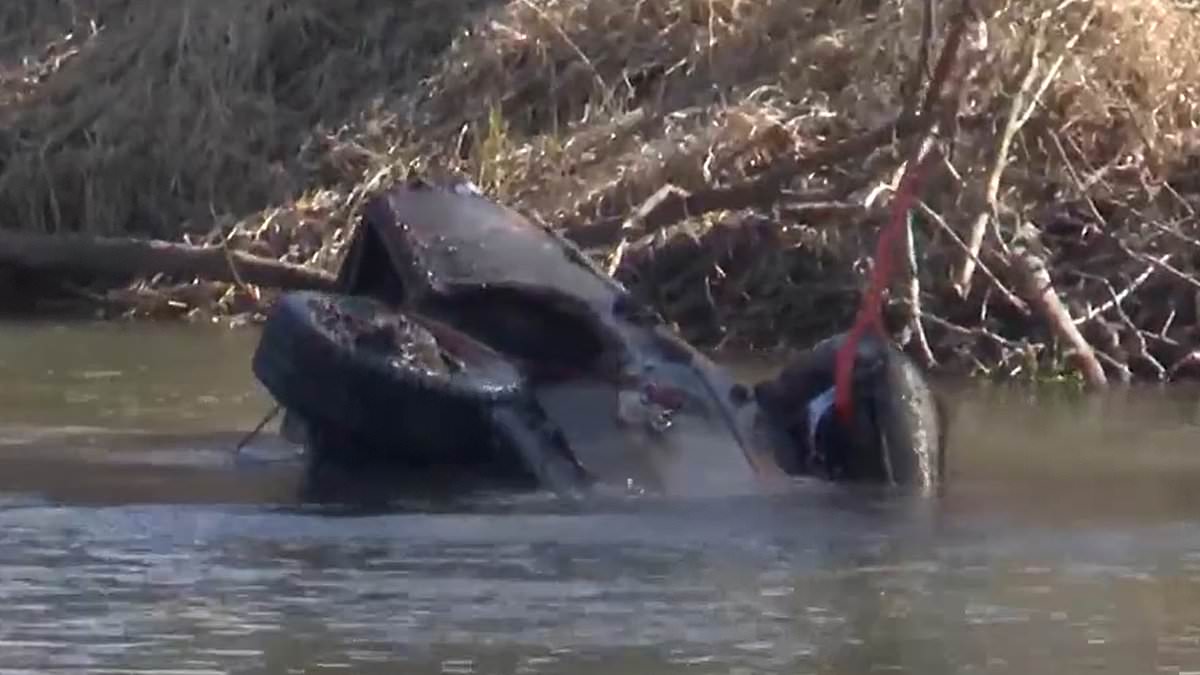The remains of two missing Illinois men who vanished nearly 50 years ago have been found in a car pulled from a river, the coroner’s office confirmed.
The Winnebago County Sheriff’s Office said the skeletal remains found in a 1966 Chevrolet Impala submerged in the Pecatonica River belong to Clarence Owens and Everett Hawley, reported WIFR.
Owens, age 65, and Hawley, 75, were last seen at a farm auction near the Winnebago-Ogle County line on February 19, 1976, according to the Winnebago County Sheriff’s Office.
The car involved in the case was found in the river in March. The coroner’s office said their cause of death is unknown but no foul play is suspected.
‘This brings us one step closer to providing closure to the families of Clarence Owens and Everett Hawley who have waited many years for answers that have been affected by this tragic case,’ said Winnebago County Sheriff Gary Caruana.
‘This is a testament to the dedication and perseverance of our detectives and forensic experts. It’s a reminder that no case is ever truly closed no matter how much time has passed.’
The two men were business partners and were last seen between 2:40 pm and 3 pm at a farm auction, reported WTVO.
They had attended a political rally for gubernatorial candidate James Thompson at the American Legion in Pecatonica earlier that day before stopping at Rocky’s Cafe and visiting Owen’s son who lived nearby.
The next day, the two men missed a scheduled appointment in German Valley and were reported missing.
In March, a fisherman told authorities his sonar equipment detected a car in the Pecatonica River, near E. First and Washington streets.
Video from the scene shows crews and divers using a crane to pull out the 1966 Chevrolet Impala.
Officials found more than 100 bones belonging to at least two people and the Winnebago County Coroner Jennifer Muraski confirmed in may the remains belonged to two males.
‘It made it very difficult for the forensic anthropologist to do her work because they were under the water for so long and it was also taxing on those who were trying to do the DNA extraction,’ said Muraski.
‘But they were able to do it, and that’s why it took a little bit longer than we had hoped.’
